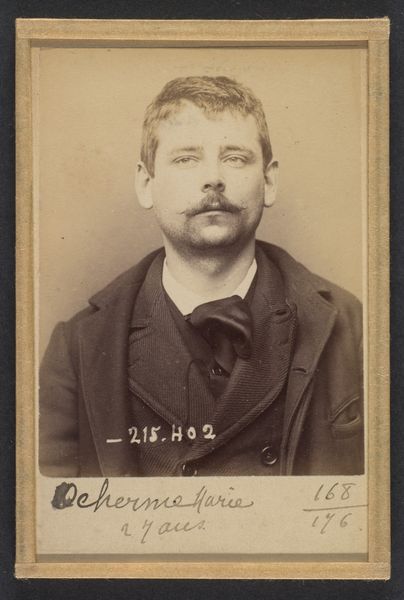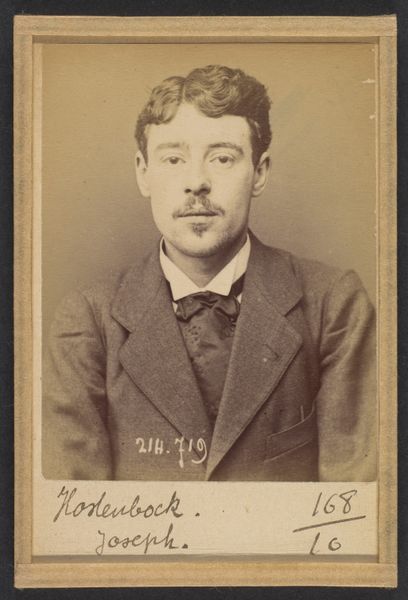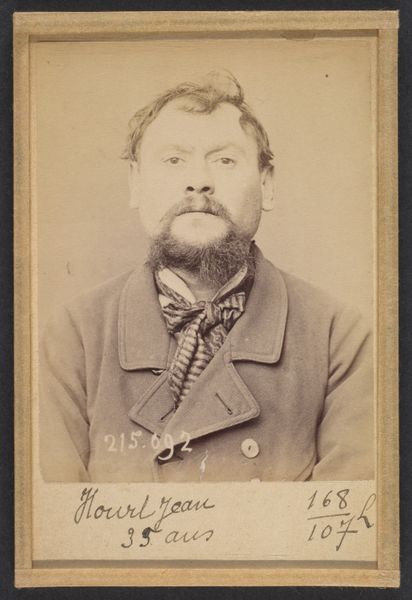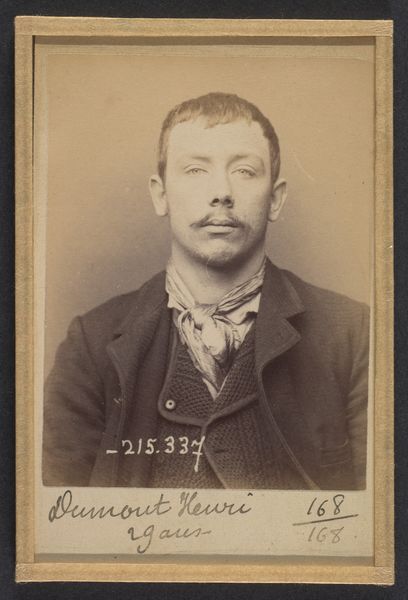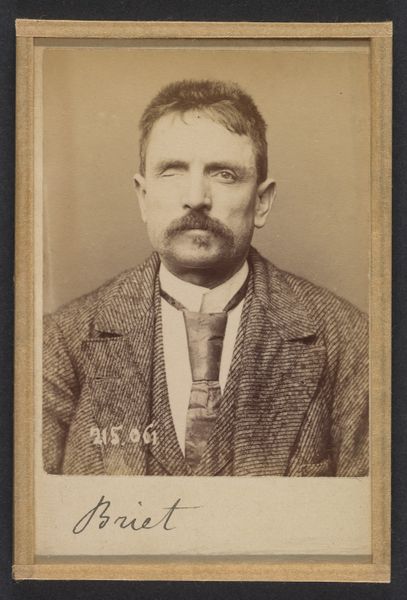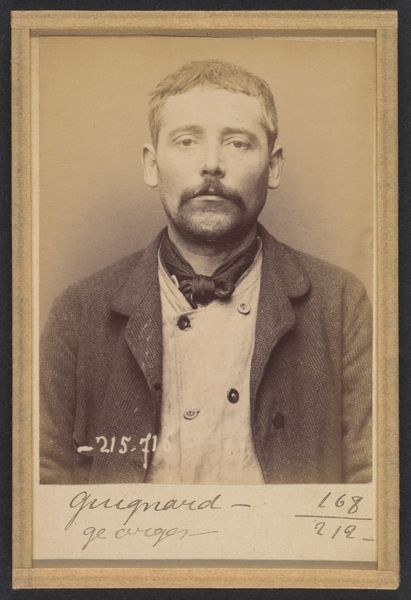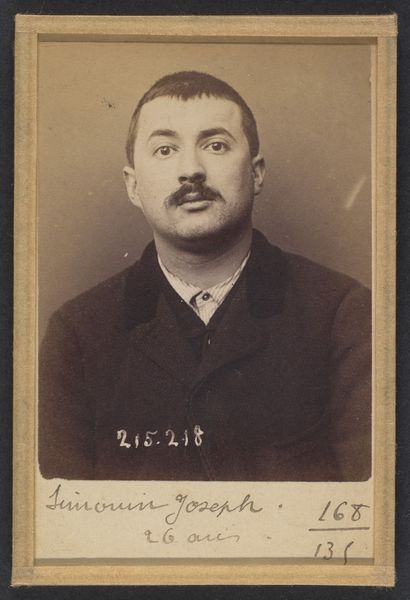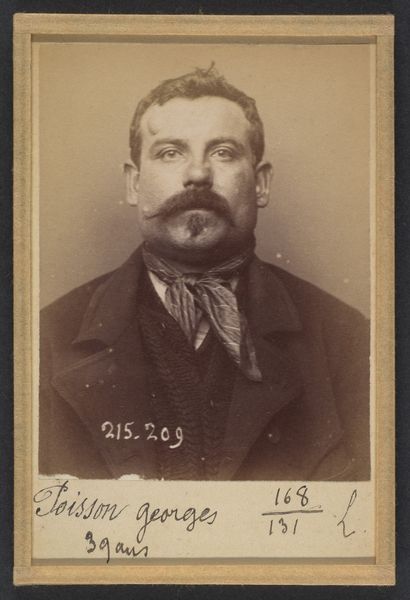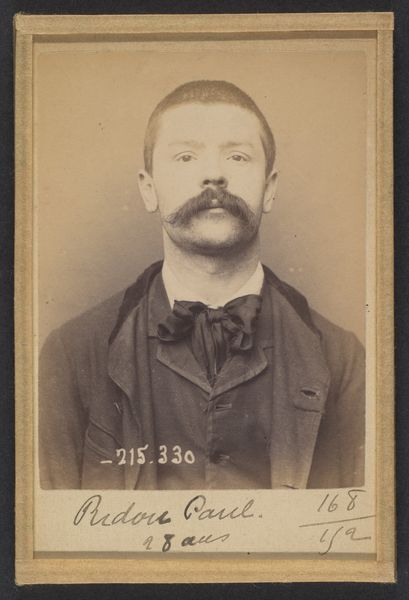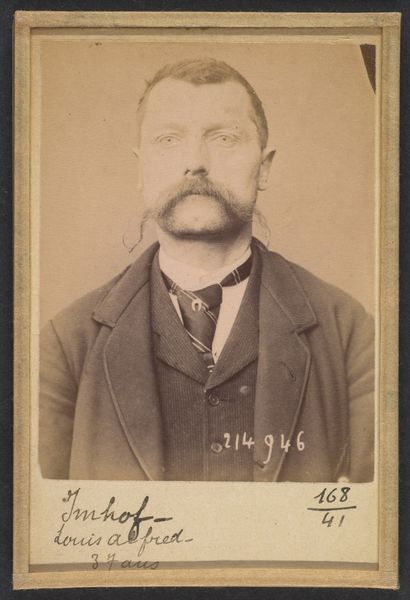
Molmerret. Joseph, Camille. 28 ans, né le 20/11/65 à Lyon (Rhône). Graveur. Anarchiste. 26/5/94. 1894
0:00
0:00
daguerreotype, photography
#
portrait
#
portrait
#
daguerreotype
#
photography
#
historical photography
#
portrait art
Dimensions: 10.5 x 7 x 0.5 cm (4 1/8 x 2 3/4 x 3/16 in.) each
Copyright: Public Domain
Curator: This is a daguerreotype photograph from 1894, taken by Alphonse Bertillon. Its full title reads "Molmerret. Joseph, Camille. 28 ans, né le 20/11/65 à Lyon (Rhône). Graveur. Anarchiste. 26/5/94." It's currently housed at the Metropolitan Museum of Art. Editor: It's so direct, so unblinking. The gray scale flattens the image, heightening the contrast. I am drawn to his direct stare and what feels like a forced symmetry in pose. There's also a fascinating tension created by the very rigid frame juxtaposed with a casually knotted tie. Curator: The symmetry is purposeful. Bertillon was a pioneer of forensic photography and anthropometry, developing a system of identification based on precise body measurements and standardized portraiture for law enforcement. This is, in essence, a mugshot. Editor: Ah, that changes everything. Seeing this as a mugshot strips any romanticism. Look at the drabness of the clothing—no doubt all from the same oppressive source. Even the light feels like an interrogation. Curator: Exactly. The even lighting minimizes shadows that could obscure identifying features. The gaze is directed right at the camera. But knowing he’s an engraver and an anarchist, these biographical markers inject another layer, turning this object into more than just a police record. Editor: The written descriptions actually bring the man alive again! Adding ‘anarchist’—what an explosive tag within a highly controlled image and system of classification. Curator: Indeed. The image then also captures a cultural fear of anarchy during the time and criminalizes certain classes and professions. You could say the camera functions here not just as a recorder but as an active agent of power. The image exists to place Molmerret inside the ever growing encyclopedia of criminals. Editor: And by viewing it, we become complicit in the project. What once felt stiff and clinical reveals itself as part of the same ideological forces. The beauty of constraint now strikes me differently. I came for art, but found state control staring back. Curator: I agree. Understanding the purpose gives it its power. Hopefully, knowing some of the contextual history opens further levels of inquiry. Editor: Yes, now I feel much better prepared to step aside and give others space for contemplation as they arrive.
Comments
No comments
Be the first to comment and join the conversation on the ultimate creative platform.
